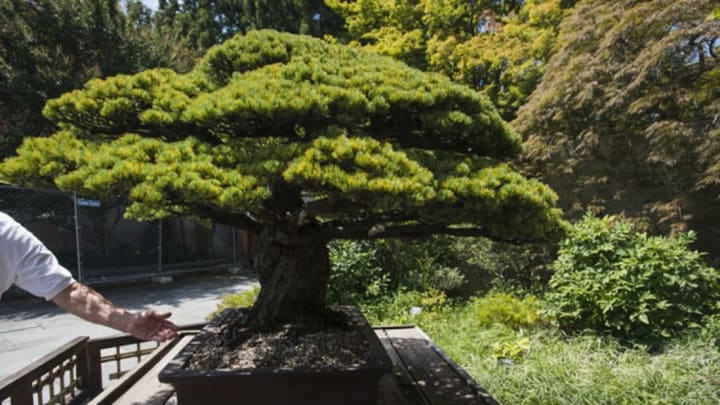Celebrating a 390-Year-Old Bonsai Tree That Survived the Hiroshima Bombing
A Japanese white pine bonsai tree stands in the National Arboretum in Northeast Washington, boasting a full set of bright-green leaves and an impressively thick trunk, approximately 18” in diameter. Thirty nine years after its arrival at the facility, and on the 70th anniversary of the Hiroshima bombing, the tree is being honored.
In 1976, as “part of a gift to the United States for its bicentennial,” bonsai master Masaru Yamaki donated the topiary. For 25 years, it stood quietly among the rest of the collection in the Bonsai and Penjing Museum. But, in 2001, everything changed. Yamaki’s grandchildren, Shigeru and Akira Yamaki, arrived unexpectedly to view the precious bonsai, which they had never before seen, and subsequently unraveled its awe-inspiring history.
This “botanical relic” is actually a whopping 390 years old and, according to the Washington Post, it has already surpassed its expected lifespan. But that’s not even the most amazing aspect of its existence. Seventy years ago, it resided in Japan. More precisely—Hiroshima. And, 70 years ago, it survived the Hiroshima bombing.
The bonsai, which stood in Yamaki's nursery, was barely two miles away from the site of the blast and yet it, as well as all the members of the household, managed to survive the impact and the flying shards of glass from shattered windows.
The collection’s caretaker, Jack Sustic, is responsible for the tree's well-being. This includes daily watering, inspecting for bugs, rotating with the sun, and occasional re-potting. According to Sustic, “Bonsai refers not to the type of tree but rather the manner in which it is cared for. It is the blending of art and nature...Bonsai is like a verb. It’s not a noun; it’s doing.”
Clearly, this has been some good bonsai.
[h/t: Washington Post]
